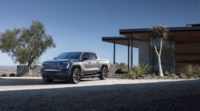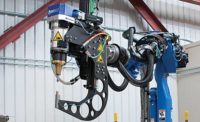Automotive Industry
Toyota Maintains Top Automotive Spot in Annual U.S. Patent Ranking
The automaker is in the top 10 among all patent recipients in 2024.

Parts come from 200 suppliers and are delivered in standardized blue plastic boxes, which travel back and forth between suppliers and the plant.
Photo courtesy Toyota Motor Corp.
ANN ARBOR, MI—For the 11th consecutive year, Toyota has secured more patents from the United States Patent and Trademark Office (USPTO) than any other automotive company, according to the annual report by the Intellectual Property Owners Association (IPO). Toyota also remains in the top 10 among all patent recipients with 2,428 U.S. patents in 2024.
Toyota earned patents in dozens of areas this past year, including cybersecurity, driver assist technology, edge computing, electric and fuel cell vehicles, mobility as a service, manufacturing, materials, robotics, telematics, and vehicle-to-vehicle connectivity.
“Toyota is evolving into a mobility company, and the breadth and depth of our patent acquisitions exemplify the wide range of invention that is taking place at our company,” said Sandra Phillips, senior vice president for enterprise integrity, chief sustainability officer and chief legal officer at Toyota Motor North America.
Patents issued to Toyota in 2024 include:
-
Lidar reflective fabric. Lidar-based obstacle detection and avoidance systems, most commonly used on autonomous vehicles, have historically not had effective visibility of black-colored items due to their lack of reflectivity. Toyota previously received a patent for a proprietary black pigment based on copper oxide nanocrystals that enable detection by lidar. Now, this pigment has been integrated into textiles that can be used in clothing, bags and apparel for improved lidar detection safety
-
Transport energy transfer using real-time cost information. An electric vehicle (EV) with bi-directional power transfer capability is a useful source of distributed energy for the electric power grid. The power grid is not homogenous, and local supply-vs.-demand imbalances are reflected in real-time electricity pricing at different locations at different times of the day. A bi-directional EV can charge and discharge power from and to the grid, taking advantage of these local price differences. However, it’s difficult for EV owners to track pricing and make decisions on when, where and how much energy to charge or discharge. Toyota has developed a method to automate the tracking of this information and use it to optimize and recommend the time, location and amount of energy to charge and discharge for maximizing the energy value without impacting the mobility needs of the EV. This method is applicable to both commercial fleet vehicles as well as individual privately-owned vehicles.
-
Systems and methods for managing cooperative maneuvering among connected vehicles. For automated vehicles to make future traffic more efficient, these vehicles will have to work together by sharing their future plans through wireless communication. Depending on the traffic situation and the type of maneuver, an automated vehicle may ask surrounding vehicles to cooperate. Toyota has created methods to select which vehicles are best to cooperate to produce more efficient and smoother flowing traffic.
- Modular fuel cell system architecture and a control system for distributing power to the modules. Hydrogen fuel cell systems represent an important technology for Toyota’s multi-pathway approach for reducing carbon emissions. Toyota is evolving this technology with a new architecture and control system that optimizes power distribution for maintaining efficiency, durability, drivability and safety of the system. This equalizes power draw on the battery and can extend battery life.
Looking for a reprint of this article?
From high-res PDFs to custom plaques, order your copy today!




